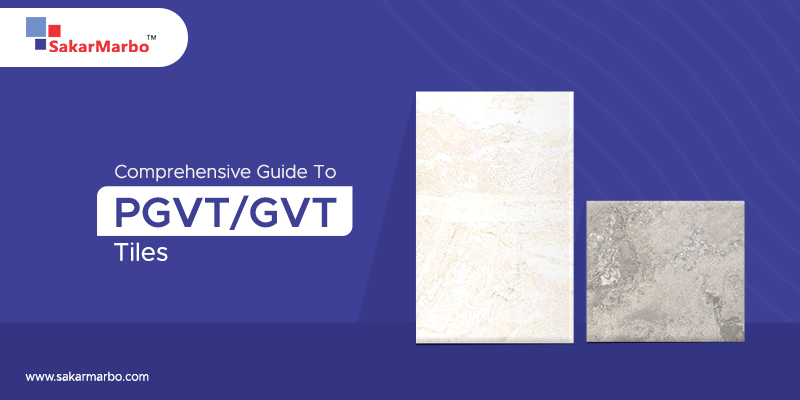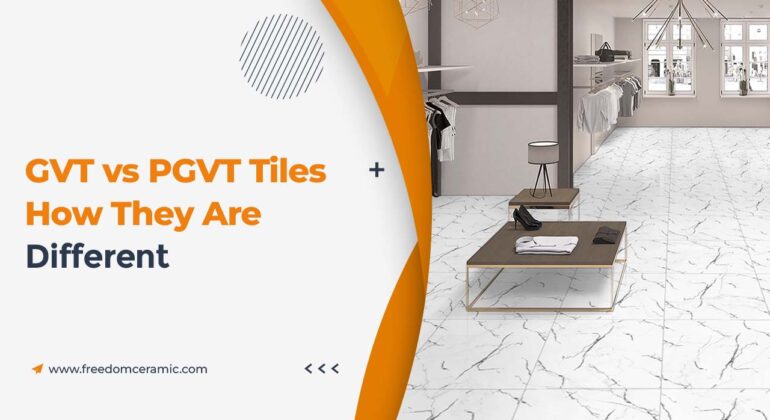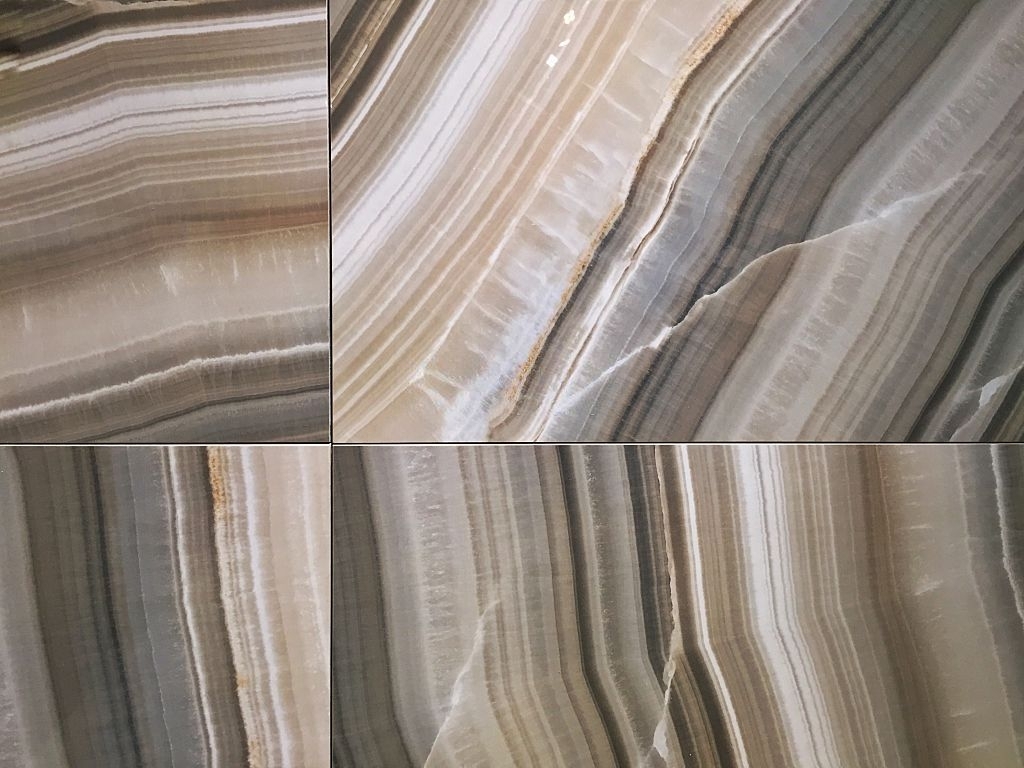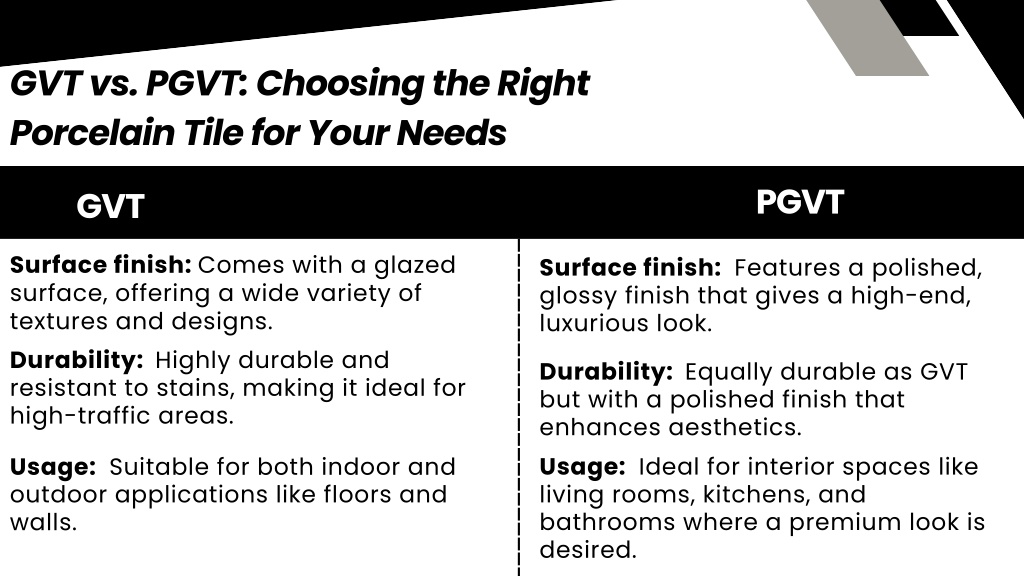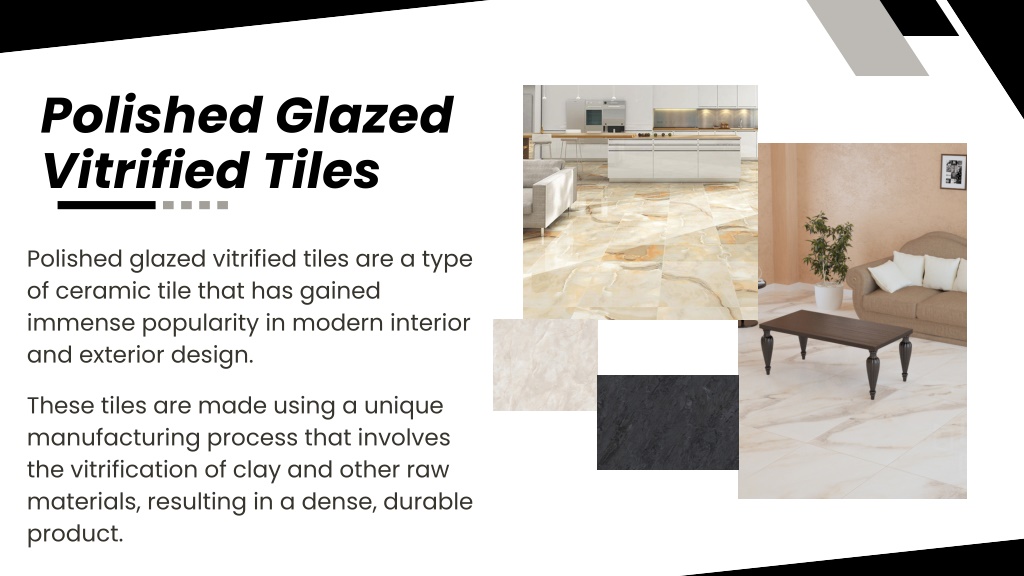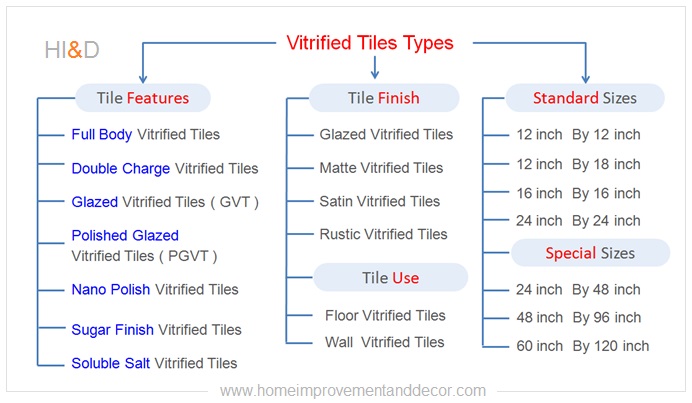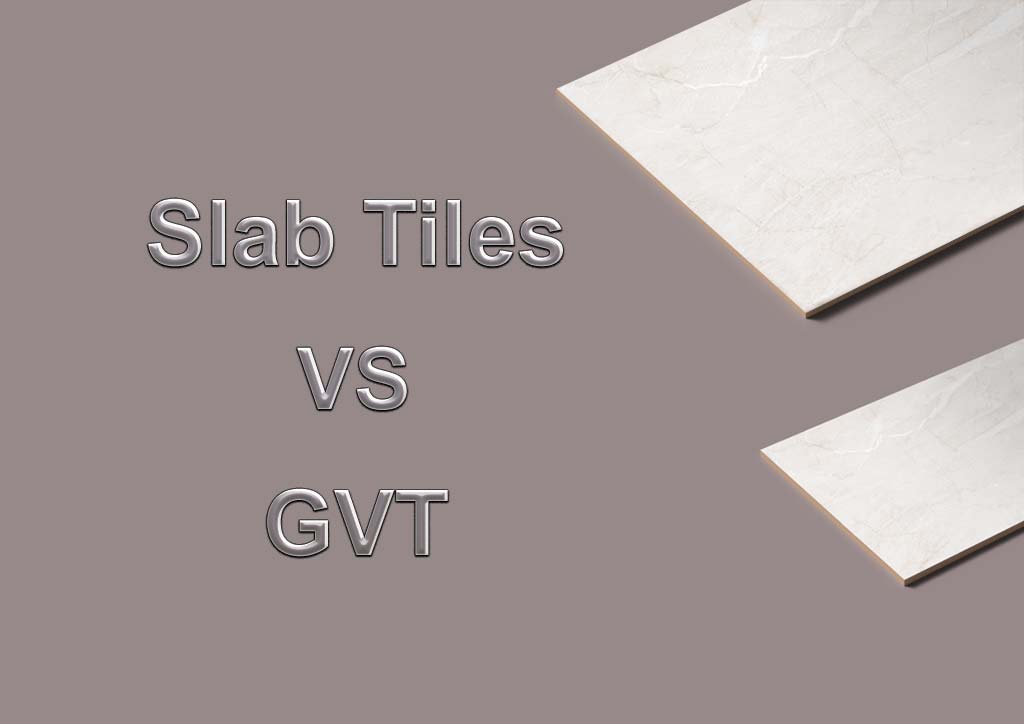Difference Between Gvt And Pgvt Tiles

Imagine stepping into a sun-drenched kitchen, the light reflecting off the perfectly laid floor tiles. Or perhaps you're admiring the sleek, modern bathroom of a friend's new home, captivated by the seamless elegance of the tiling. These everyday moments often mask the intricate world of tile manufacturing, where subtle differences in materials and processes can make a significant impact on the final product and its suitability for various applications.
The distinction between Glazed Vitrified Tiles (GVT) and Porcelain Glazed Vitrified Tiles (PGVT) might seem like a minor detail, but understanding this difference is crucial for homeowners, contractors, and designers alike. At its core, the key difference lies in the surface finish and manufacturing nuances, influencing durability, aesthetics, and ultimately, the best use cases for each type of tile.
Delving into Glazed Vitrified Tiles (GVT)
GVT tiles, as the name suggests, feature a glazed surface layer applied during the manufacturing process. This glazing not only provides a decorative finish with a wide range of colors, patterns, and textures, but it also offers a layer of protection against stains and moisture.
The base material is typically a vitrified clay, meaning it's been fired at high temperatures to reduce its porosity, making it water-resistant. This combination of a durable base and a protective glaze makes GVT tiles a popular choice for residential and light commercial applications.
GVT tiles come in a dazzling array of designs, mimicking natural stone, wood, and even abstract patterns. The glazing process allows for intricate detailing, making it a versatile option for various design aesthetics.
Unveiling Porcelain Glazed Vitrified Tiles (PGVT)
PGVT tiles build upon the foundation of GVT, utilizing a porcelain body known for its exceptional strength and low porosity. Porcelain, made from a refined clay mixture fired at even higher temperatures than standard vitrified clay, boasts superior water resistance and durability.
Like GVT, PGVT tiles also feature a glazed surface, offering similar aesthetic versatility. However, the porcelain base provides added resilience, making PGVT a superior choice for high-traffic areas and demanding environments.
According to the Tile Council of North America (TCNA), porcelain tiles, including PGVT, have a water absorption rate of 0.5% or less. This makes them incredibly resistant to staining, cracking, and other forms of damage caused by moisture exposure.
Key Differences Summarized
The primary distinction rests on the base material: GVT uses vitrified clay, while PGVT employs a porcelain body. This difference translates to varying levels of durability and water resistance.
While both offer a wide range of designs through their glazed surfaces, PGVT tiles provide greater strength and longevity. Think of it as the difference between a standard sedan and a luxury SUV – both will get you from point A to point B, but one offers superior performance and resilience.
Durability and Water Resistance
PGVT excels in high-traffic areas due to its robust porcelain base. GVT tiles are well-suited for residential use and lighter commercial spaces.
Cost Considerations
Generally, PGVT tiles come with a higher price tag due to the superior materials and manufacturing process. However, the long-term value and reduced maintenance can often offset the initial investment.
Applications
Choose PGVT for bathrooms, kitchens, and areas with heavy foot traffic. GVT tiles are ideal for living rooms, bedrooms, and areas where aesthetics are a primary concern.
"Choosing the right tile is not just about aesthetics; it's about investing in the longevity and performance of your space," advises a flooring expert from a leading home improvement retailer.
Making the Right Choice
Ultimately, the best choice between GVT and PGVT tiles depends on the specific requirements of your project. Consider the level of foot traffic, potential exposure to moisture, and your budget.
Consulting with a qualified tile installer or design professional can provide valuable insights and help you make an informed decision. They can assess your space, understand your needs, and recommend the most appropriate tile for your project.
As we navigate the world of home improvement, understanding these subtle yet significant differences empowers us to create spaces that are not only beautiful but also durable and functional. Whether you opt for the elegant versatility of GVT or the robust resilience of PGVT, informed choices lead to lasting satisfaction.
